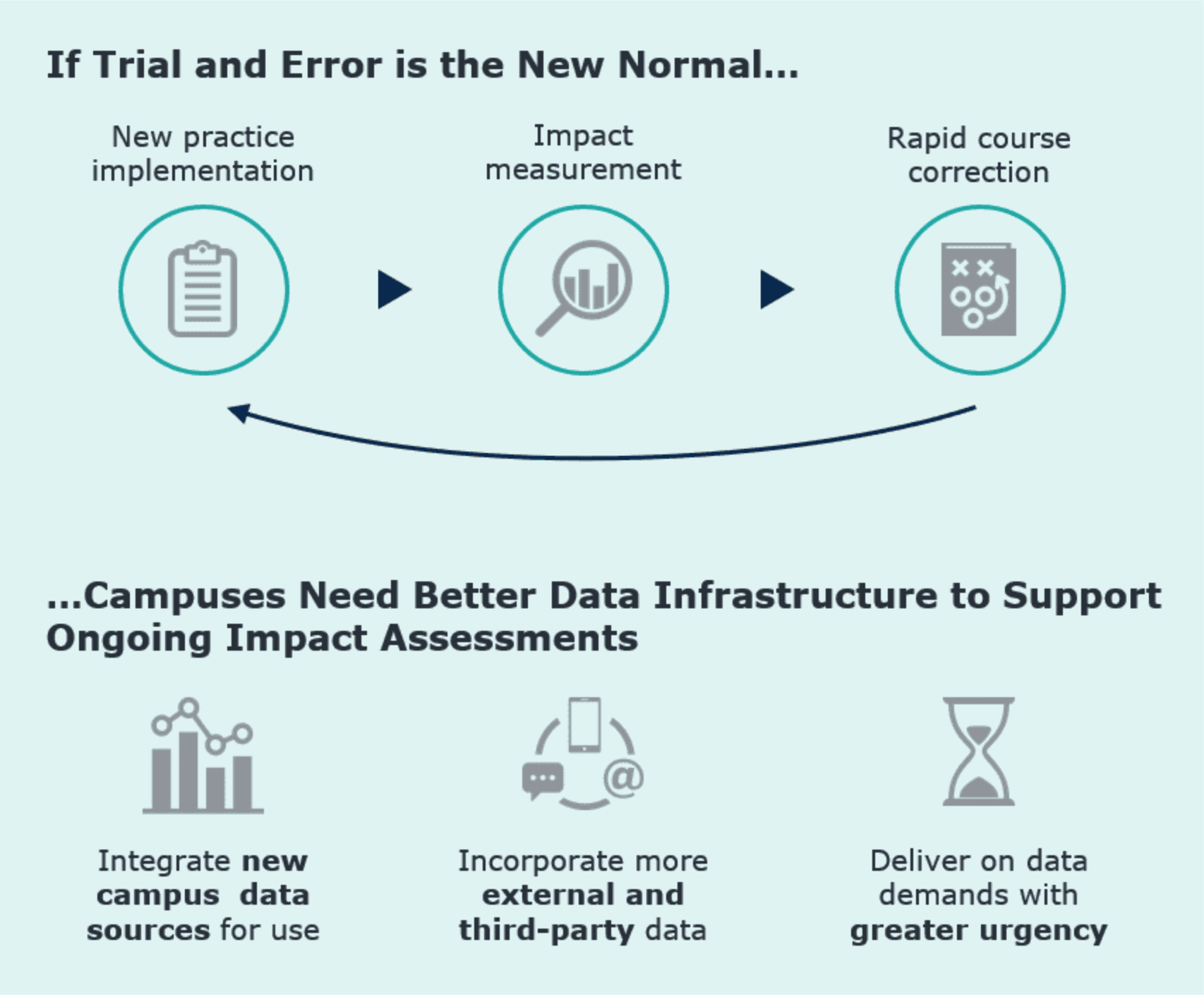Data democratization 101: What higher education data leaders need to know
Campuses are awash with data. From cradle to career, the students that pass through our institutions are tracked in bits and bytes through digitized processes documenting everything from their financial aid packages to their extracurricular activities. But for many institutions, those data elements are accessible only to a fraction of staff-often limited to the domain or administrative function where specific attributes are tracked.
What is data democratization?
Data democratization is the process of making institutional data available to everyone without gatekeeping and bottlenecks standing in the way and slowing down the process. “The goal is to have anybody use data at any time to make decisions with no barriers to access or understanding,” writes Bernard Marr, author of Big Data in Practice.
But that doesn’t mean simply throwing open the doors of the campus data stores and encouraging a Tableau free-for-all. Completely open data access is a security risk for the campus, and the number and complexity of systems and databases often leads to duplicated efforts and misaligned analyses when different functions selectively curate their data sources.
How does democratized data drive innovation?
Where leaders and teams throughout the institution can access quality data in a timely fashion, they are empowered to translate insights into action independently. For example, when fundraisers have access to the on-campus activities of the alumni they work with, they can promote current campaigns with a more personal touch.
- When advisors have access to students’ remote learning course engagement data, they can intervene early when engagement begins to drop off
- When facilities teams can determine campus population densities by tracking building entries and course schedule data, they can proactively optimize campus cleaning efforts to high-traffic areas
These cycles of data-driven intervention and course correction promote agility in the organization, resulting in improvements across the board: more attentive student support, more nimble class optimization, and more effective resource distribution. For every campus initiative, being faster and more effective leaves time and resources on the table for new initiatives.
Yet, although data democratization and decision-making agility is facilitating innovation at some institutions, many are struggling to harness the power of their information. Burgeoning numbers of data requests are overwhelming limited resources in central IT and institutional research organizations, leaving most of higher education’s functions reactive, and assessing outcomes and possible strategy pivots on annual-or sometimes even longer-cycles.

How can campuses achieve data democratization?
The road to data democratization is not an easy one, but campuses looking to make improvements to data access and data literacy at their institution should focus their attention on three key areas of development:
1. Promote collaboration with data governance
An early roadblock in efforts to democratize data is data “ownership.” Functional units that purchase data systems and run the institution’s various operational and educational processes often feel protective over “their data.” Whether due to concerns about data security, the quality of their data collection, or the validity of future analysis, efforts to reduce visibility into data silos will quickly stifle progress.
Successful collaboration between the different areas of campus that collect parts of the data patchwork is usually mediated through formalizing data governance: a series of policies, processes, and practices to guide the collection, use, and standardization of data meaning on campus. EAB recommends using a bicameral committee structure to establish your governance work, with mutual accountability between executive leaders and frontline staff propelling the work forward.
WHY DATA GOVERNANCE MATTERS-AND WHY MOST DATA GOVERNANCE PROJECTS FAIL
2. Break system expert bottlenecks with a campus data model
On most campuses today, analysts looking to review data from an assortment of campus functions are expected either to understand the various database storage schema of the systems in question or-more frequently-to wait for someone who does to help them. If speeding up decision-making is a top priority for your campus, focus on optimizing your data for analytics with an enterprise data model. Transforming data from source systems and conforming it to a system-agnostic campus data model provides an intuitive access framework for your institutional information. Moreover, when decisions made during data governance conversations are hardwired into your data model, data stewards have peace of mind that functional data is being interpreted appropriately-building organizational data trust and speeding analysis simultaneously.
SEE HOW ONE UNIVERSITY IS CREATING A CAMPUS-FOCUSED VIEW OF INSTITUIONAL DATA
3. Incentivize adoption by delivering data to favored tools
Encourage faculty, staff, and even students to access the data that’s available. For many individual stakeholders, limited data literacy and calcified workflows mean that it can be difficult to build widespread support for new, centralized data visualization and analytics tools. But if modeled data can be delivered directly to users’ tools of choice-whether that’s the Advancement CRM for fundraisers, a statistical package for analysts in Enrollment Management, or a curated dashboard for the Chief Business Officer-data teams can drive adoption by mitigating the burden of learning. As users grow comfortable with more data and explore new avenues for analysis, central data management teams can broaden access to more complex tooling in step with the institution’s data maturity.
PRACTICES TO BUILD CAMPUS DATA LITERACY
As uncertainty caused by the COVID-19 pandemic continues, expanding access to reliable data will only become more important. To connect the dots across the student experience and build supportive environments for their academic missions, institutions must focus on democratizing their data to speed time to insight and empower their leaders to manage ongoing change.
More Blogs

4 reasons your team won’t use data—even if they want to

How to build a predictive model in higher education
